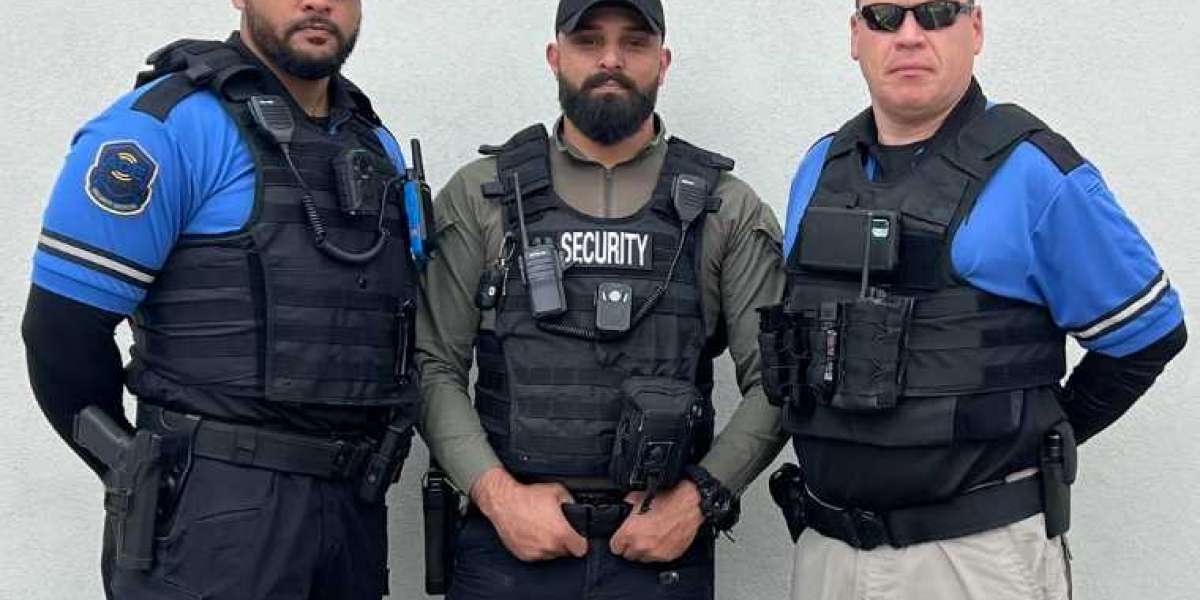When you're responsible for the safety of a business, property, or people, one of the most critical decisions you'll make is the type of security presence you establish. Many people use the term " security guard " as a catch-all, but this can lead to a significant misunderstanding. The choice between standard security guards and an armed security guard is not just about equipment—it's about the level of threat, the nature of the response, and the overall atmosphere you wish to create. Choosing incorrectly can mean inadequate protection, unnecessary liability, or a climate of fear.
This isn't about which option is "better." It's about which one is right for your specific situation. Making an informed choice requires a clear understanding of their distinct roles, training, and legal implications. Let's break down the key differences to guide you towards the most effective and appropriate solution for your security needs.
Defining the Core Roles: Prevention vs. Response
At its heart, the distinction lies in the primary function of each role. One is focused on deterrence and observation, while the other is equipped for a higher level of threat intervention.
The Security Guard: A Visible Deterrent and Observer
Think of a standard security guard as the foundation of your security strategy. Their power lies primarily in their presence.
- Core Function: Their main job is to observe and report. They are the eyes and ears on the ground, trained to identify potential problems before they escalate.
- Typical Duties: This includes tasks like access control at a front desk, checking employee badges, patrolling a property perimeter, monitoring CCTV cameras, writing detailed incident reports, and providing customer service by giving directions or assisting visitors.
- The Deterrent Factor: A uniformed professional stationed at an entry point or walking a patrol route is a powerful psychological deterrent to casual theft, vandalism, or trespassing. A potential shoplifter seeing a guard at the door is more likely to move on. A disgruntled former employee may think twice about causing a scene if a calm, authoritative figure is present.
Real-World Scenario: A residential apartment complex hires a security guard to conduct overnight patrols. The guard’s role is to look for unlocked gates, note any suspicious vehicles, ensure community quiet hours are respected, and call the police if they witness criminal activity. They are a visible symbol of safety for residents and a clear signal to outsiders that the property is monitored.
The Armed Security Guard: A Protective Response Asset
An armed security guard possesses all the capabilities of a standard guard but is also trained and licensed to carry a firearm. This addition fundamentally changes their role and responsibility.
- Core Function: While they still perform deterrence and observation, their armed status prepares them to respond to immediate, high-level threats where lethal force may be a necessary last resort.
- Elevated Threat Level: The presence of an armed guard is an acknowledgment that the protected asset or location faces potential risks that go beyond petty crime. This could include the threat of armed robbery, violent assault, or terrorism.
- The Last Resort: Their firearm is not a tool for intimidation; it is a tool of absolute last resort. Their training heavily emphasizes de-escalation, conflict resolution, and the strict legal rules governing the use of force. The goal is always to resolve a situation without ever drawing their weapon.
Real-World Scenario: An armored car service making cash deliveries to banks uses armed guards. The valuables they protect are a high-value target for organized criminals who may be armed. The guard’s role is to be prepared to defend the asset and the crew against a direct, violent threat.
Key Distinctions: Training, Liability, and Perception
The difference between these two roles extends far beyond the weapon. It permeates their training, the legal implications for the employer, and the message sent to everyone on site.
Rigor of Training and Certification
All security guards require state-mandated training and licensing. However, the bar is significantly higher for armed personnel.
- Standard Guards: Their training typically covers topics like observation techniques, report writing, access control, customer service, basic first aid/CPR, and legal powers of arrest (often as a "citizen's arrest").
- Armed Guards: In addition to the standard curriculum, they must complete a separate, intensive firearms training program. This includes marksmanship, weapon safety and retention, judgment shooting (knowing when to shoot and when not to), and a deep dive into the laws surrounding the use of deadly force. They must pass both written exams and rigorous practical shooting tests to receive their permit, which is in addition to their basic guard license.
Liability and Insurance Considerations
This is one of the most critical practical considerations for any business owner or manager.
- Standard Guards: Hiring any security personnel carries a degree of liability. However, the potential risks associated with an unarmed guard are generally lower and more comparable to other employees.
- Armed Guards: The moment a firearm is introduced, the liability exposure increases substantially. If an armed guard uses their weapon, the legal, financial, and reputational consequences for your business can be severe. Therefore, it is absolutely essential to verify that the security company carries extensive liability insurance that specifically covers armed operations. You must also thoroughly vet their hiring, training, and ongoing qualification processes for their armed officers.
The Psychological Impact and Environmental Tone
The presence of a weapon sends a powerful, non-verbal message. It's crucial to consider what that message says about your environment.
- Unarmed Presence: A standard guard often promotes a feeling of safety and order. In a corporate office, retail store, or hospital, this presence is reassuring without being intimidating. It says, "We care about your safety here."
- Armed Presence: An armed guard conveys a message of heightened risk and zero tolerance. This can be reassuring in a high-risk setting like a jewelry store or a power plant, but it can also create an atmosphere of tension or fear in a more public, customer-focused setting. Ask yourself: Will my customers or employees feel safer, or will they feel like they are in a dangerous place?
Making the Right Choice for Your Needs
So, how do you decide? The choice should be a direct result of your threat assessment.
When are Standard Security Guards the Right Fit?
An unarmed security solution is appropriate for the vast majority of business and property needs. Choose standard security guards for:
- Access Control and Customer Service: Managing entry points to office buildings, condominiums, or special events.
- Loss Prevention: Deterring shoplifting in retail environments.
- Property Monitoring: Conducting patrols of construction sites, industrial parks, or closed business premises to prevent vandalism and trespassing.
- Crowd Management: Providing direction and a sense of order at concerts, conferences, or public gatherings.
- When the primary goal is a visible deterrent and observant presence without the escalation associated with a firearm.
When is an Armed Security Guard Necessary?
The decision to hire an armed professional should not be taken lightly. It is warranted in situations involving a credible threat of violence. Choose an armed security guard for:
- Protecting High-Value Assets: Guarding cash-intensive businesses (banks, cash logistics), valuable goods (jewelers, high-end electronics), or critical infrastructure (utility substations, data centers).
- High-Risk Environments or Personnel: Providing executive protection in potentially dangerous regions or securing locations where volatile situations may arise.
- When there is a documented, credible threat that exceeds the capabilities of an unarmed responder and local police response times may be insufficient.
Conclusion: A Strategic Decision for Your Safety
The choice between a security guard and an armed security guard is a strategic one. It balances the level of perceived risk with the practical realities of liability, cost, and the environment you wish to foster. An unarmed guard is a versatile tool for prevention, observation, and creating a secure yet welcoming atmosphere. An armed guard is a specialized resource for confronting the most serious threats where lethal force is a possible, albeit last-resort, option.
By carefully assessing your actual needs rather than perceived ones, you can invest in a security solution that provides genuine protection, minimizes unnecessary risk, and fosters the right environment for your business to succeed. Always partner with a reputable, fully licensed and insured security company that can help you conduct this assessment and provide personnel who are not only qualified but also professional in their demeanor, whether they are standard security guards or a highly trained armed security guard.








